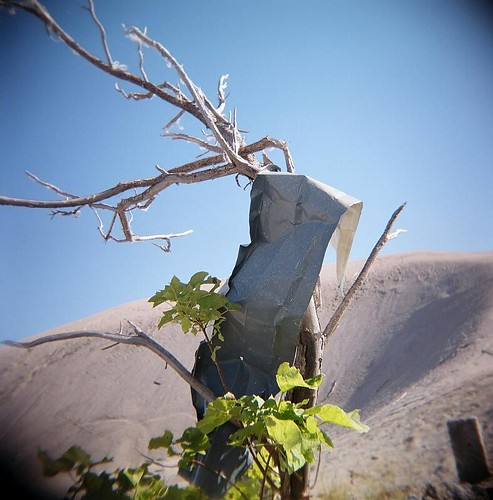
[photo: pieces of scrap metal are still bent around trees in picher, okla. they're somber reminders of a deadly tornado that hit more than four months ago. a pile of toxic mine waste is shown in the background.]
By John Sutter
State officials say the federal buyout of residents in a toxic mining site in the northeast corner of Oklahoma should be finished by December 2009. Here's the newsok story on the latest updates at the Tar Creek Superfund site.
From the story:
Osborn said that with some luck and another inflow of funds, the portion of the voluntary buyout dealing with residents and businesses within the northeastern Oklahoma Superfund site remains on track to be completed in 12 to 14 months.
"The funding stream will determine how fast we are able to go," he said. "The EPA is committed to giving us the money; it's a matter of how they can make that happen."
The trust already has spent or is encumbered to spend about $35 million on the buyout. It has about $9 million in pending deals and expects to need $12 million to $14 million in additional funds to complete the process, said J.D. Strong, Oklahoma's secretary of the environment.
If you haven't heard about Tar Creek, I think it's important to get some background. The toxic site is centered on Picher, Okla., which once was the heart of a huge lead and zinc mining district. The mines are underground, and, in 2006, Sen. Jim Inhofe, R-Tulsa, passed a plan to start moving people out of the area, because a government study found many house and businesses to be at risk for sinking into the abandoned mining caves. Inhofe previously had opposed any buyout plans. The area has been on the U.S. Environmental Protection Agency's list of Superfund (toxic waste) sites since 1983. Huge mountains of gravel mine waste are piled up all around town, and kids in the area have tested for high levels of lead in their blood. In May, a tornado hit the town, leveling half of the buildings and killing six people.
For more background, see this recent story I wrote for The Oklahoman.




No comments:
Post a Comment